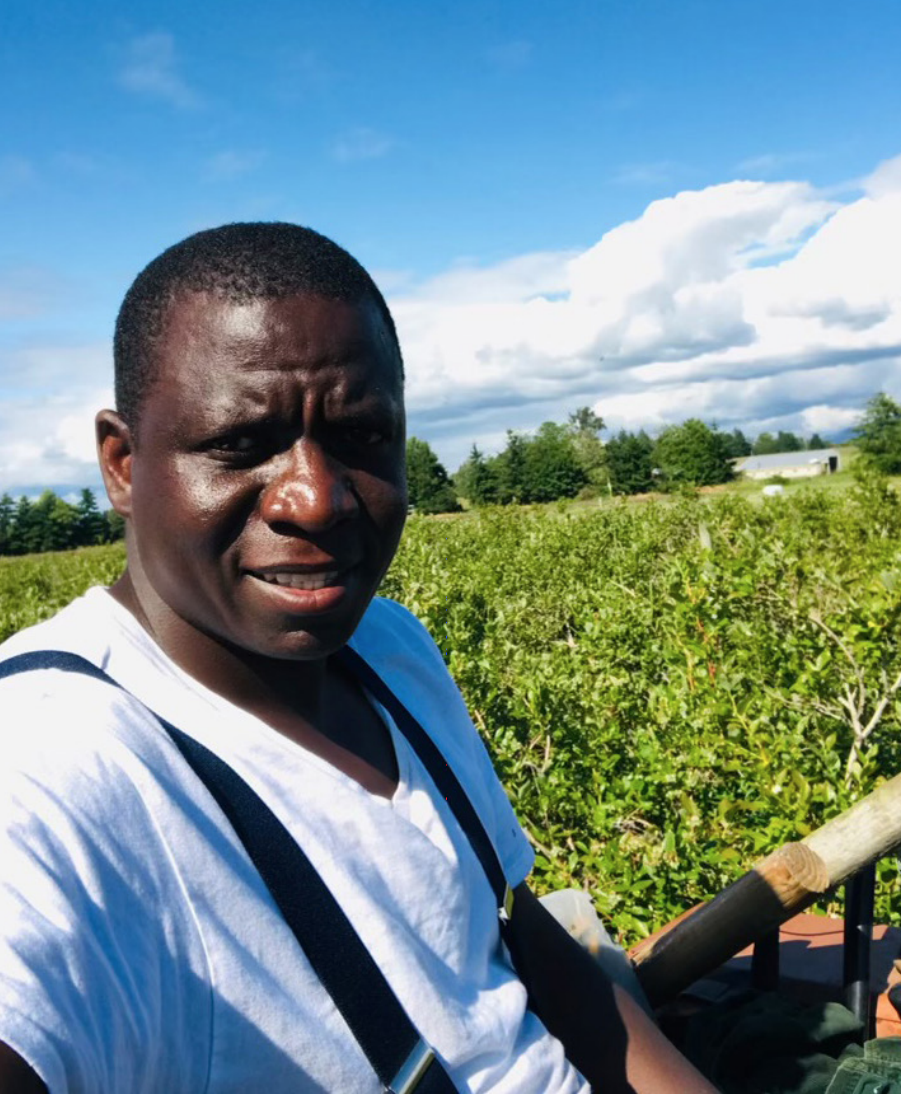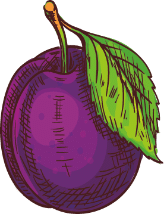
Connecting Communities Through Scratch Cook School Food
July 08, 2021 | By Dani Chandler
Read this Q&A to learn about how Patrick Durgan, Food Service Director at Bellingham Public Schools, created a successful “farm to freezer program” and connected his community through locally sourced, scratch cook food.
Sourcing locally is a major goal for many school food programs; the ultimate goal is to support an entire community through school-serving efforts (in addition to achieving high ADP). But you may be wondering...how is that possible? Cue Patrick Durgan, Food Service Director at Bellingham Public Schools in Washington state. Last March, Durgan created a “farm to freezer” program that successfully connected his school food program and the local farm community, a huge achievement with many levels of impact.
If “farm to freezer” is new to your vocabulary, you’re not alone. Imagine taking farm to school a step further by preserving entire meals and maximizing the use of commodities. We interviewed Durgan to hear how this farm to freezer program came to fruition and the incredible impact it has made on the local community.
The pandemic has shifted how districts have operated in a variety of ways. In terms of menu cycles and local procurement, what have been the biggest changes for BPS and what notable benefits have come out of this?
When the pandemic hit, it cut us off at the knees for program development. We had just started a new menu, went through 3 full menu cycles at that point, and we were going to run at least 2 more. We had dialed our menus in, and had a really good idea of our service model. We were ready to hit cruise control with menus and weren’t going to add new menu items. It was time to focus on more student engagement and sampling events, and time to make sure the menus were resonating with students and customers. We just needed to ensure we were getting good feedback and participation. But once the pandemic hit, we knew we weren’t going to be able to do that anymore.
Locally sourced items didn’t make sense with the new to-go model we would have to shift into. This new model would require more shelf stable items and we didn’t have capacity to serve food the same way. At first, it was a little discouraging and we were trying so hard to figure out a new model.
It didn’t sink in until summer and we were losing inspiration, but that’s when our farmer to freezer program entered the picture and immense progress was made.”
How was your community able to band together and fuel the “farm to freezer program?” Can you speak about how it started and the different aspects of operation?
The Bellingham Food Bank were already good partners of ours and this program would not have happened if we didn’t already have good relationships with them. This is a great example of why it’s important to form solid partnerships within your community. They were already preparing our menu items in their cooking classes and we had discussions throughout the year about how to best support each other.
The food bank was awarded a WSDA grant “to pilot a program to purchase locally grown food products to provide vital income opportunities for farmers, and to build inventory for food banks and hunger relief agencies to distribute during the post-harvest months.” They came to us with a proposal for this grant money, which gave BPS great confidence.
We contracted the facilities to be rented out and had Americorps members help with labor. All products came to BPS directly and we worked with the food bank to determine volume, crops available, etc. This gave us the opportunity to work with farmers that likely didn’t have an outlet otherwise, and to work with Americorp members as well. The Food Bank had a vision of supporting minority- and women-owned farms and we made sure to follow through with that.

Tibs Ssendawula, a blueberry farmer at Green Mountain Farm, expressed how we save their farm: “Having failed to find a meaningful buyer the previous year, to the extent of not being able to pay the irrigation water bill, selling through the Farm to Freezer Program was such a huge support to the farm operations. I was able to pay my pickers a livable wage as well as strategically position the farm to be more competitive to reach other markets in the following years. The farm was able to buy lugs, a small reefer truck, and prepare to apply for a GAP certificate. I would love the opportunity to continue with this program. The farm was able to provide a livable wage to the pickers, paid bills, and is on track to employ more people this coming season. My humble request is; please keep the program going, it is changing lives for a better future”.

Tibs Ssendawula, a blueberry farmer at Green Mountain Farm, expressed how we save their farm: “Having failed to find a meaningful buyer the previous year, to the extent of not being able to pay the irrigation water bill, selling through the Farm to Freezer Program was such a huge support to the farm operations. I was able to pay my pickers a livable wage as well as strategically position the farm to be more competitive to reach other markets in the following years. The farm was able to buy lugs, a small reefer truck, and prepare to apply for a GAP certificate. I would love the opportunity to continue with this program. The farm was able to provide a livable wage to the pickers, paid bills, and is on track to employ more people this coming season. My humble request is; please keep the program going, it is changing lives for a better future”.
How have meal boxes, created through the farm to freezer program, been successful for not only students, but your community as a whole?
Families definitely needed the food and BPS was able to get into underprivileged neighborhoods. Not only were the feeding efforts themselves important, but also the inspiration this brought to communities. Our meal boxes really encouraged families and community members to come try school food for the first time.
The first week of summer, we did about 3,000 meal boxes, which was quite alarming considering we were only serving about 1,500 before the school year ended. This number quickly jumped to 4,000 and eventually peaked at about 4,500 meal boxes a week! Thanks to our farm to freezer program, we were able to keep up and produce enough frozen quart sized meals.
We designed quart sized scratch-cook meals that encompassed 6 proteins in each, so no matter what we made, we had at least 6 proteins for crediting purposes. Having six proteins in a quart, made it an entree and therefore we knew we were meeting all nutritional requirements. We always made sure to have at least one vegan and gluten free option. For example, we usually had our chickpea masala and our two ton tomato sauce on-hand. We also made some batches of succotash soup that was featured throughout the year.
Some mothers mentioned that even for kids who weren’t food insecure, that the meal box program had a significant impact on them. This was a way for kids to get out and engage with the community. It was something special for them to do during trying times and gave them something that was theirs to look forward to. They found excitement in choosing their own meals. Parents even mentioned that their children made choices they would likely not have tried or eaten if they had prepared it at home!
Kids do make decisions differently when they have a choice and get out of their comfort zone. One of the first things you have a choice about in life is the food you eat. The option for kids to choose their food gives them more opportunity to try healthy things they might enjoy.”
Kids were also socially lacking [due to the pandemic], and through the meal box program, parents didn’t have to worry as much. But it wasn’t only kids that benefited from this social aspect. School staff members were also excited at the ability to do little check-ins with kids.
They were able to safely engage and ask what other needs they might have or ways BPS could try and support them. Some school sites saw diminishing numbers in meal boxes and we were looking to close them. But these schools asked if they could keep service going because they simply loved engaging with families and appreciated opportunities to serve them.
In regards to your serving efforts, what’s something you’re proud of that has contributed to or supported an equitable food system?
This program was truly able to help farmers stay afloat and it was very rewarding in that aspect. I am especially proud to put our focus on minority-owned and women-owned farms. We are very focused on diversity, equity and inclusion...even though Bellingham is a primarily white community, that really makes it more important to focus on inclusion. We need places for everyone to grow into and to support the system as a whole.
We honor the Bellingham Good Food Promise which highlights all of those measurables, massive cohesion with the way the district operates and how the program operates. We are constantly working towards a traceable and transparent food system.
I think bringing farmers into the cafeteria to show kids where their food came from is extremely effective. When you can put a face on a carrot, it means more to the kids; and I have never seen kale fly off a salad bar faster than when it came from the school garden where kids personally played a part in the growing process”
Is there anything else you would like to speak about or highlight?
We are in a really good place compared to where we planned to be this year. We progressed much more quickly than how we think we ever could have without the pandemic. We are optimistic about next year because families want this food and now they don’t have to pay with the extended waiver. We look forward to highlighting the diverse menu that we have. And are hopeful about encouraging families to participate since they don’t have to pay.
In a way, this is the opportunity we have been waiting for to impact our food system nationwide. The extension for universal meals has highlighted how we can eliminate the stigma of who eats school lunch. Kids don’t want to be labeled but when we can all dine together and share that same meal, we have offered an opportunity for that kid to get a nourishing meal and not feel labeled.
Schools serve approximately 8 billion meals a year, so yes, we can absolutely make an impact. We need to help our food system by supporting local sources, local farmers and create a system that actually works.
*All images courtesy of Bellingham Public Schools.







